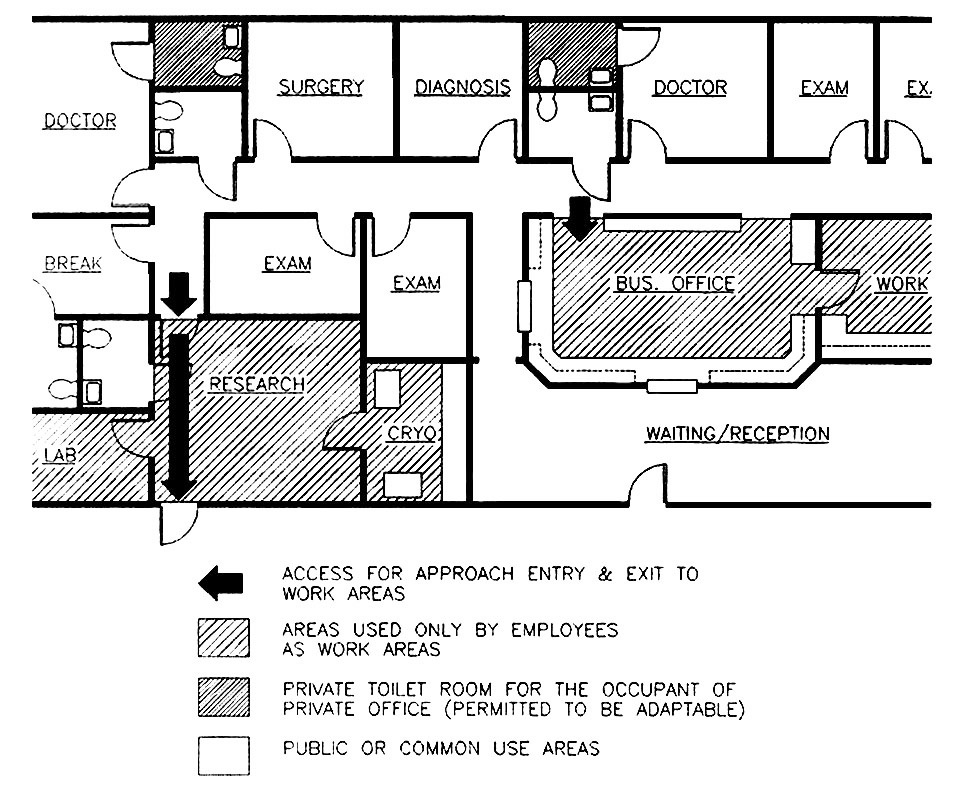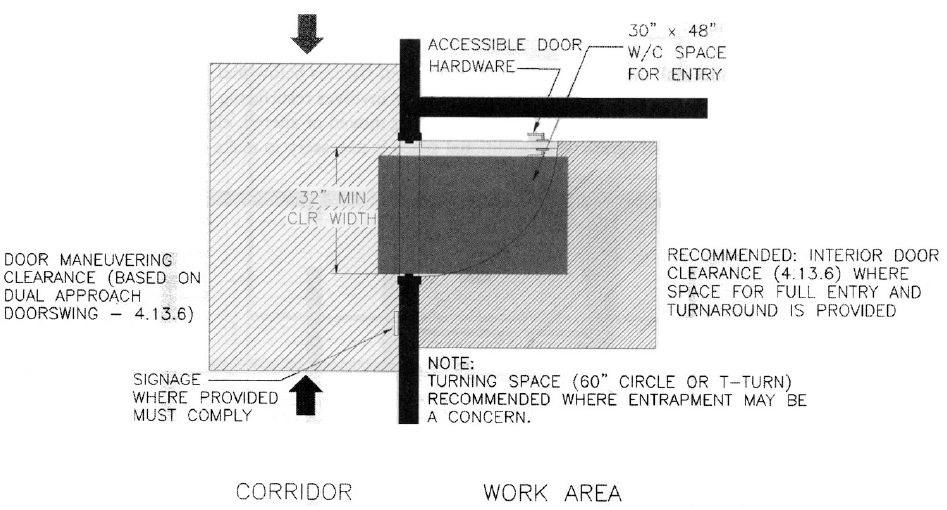Work Areas [4.1.1(3)]
ADAAG, as issued under titles II and III of the ADA covering public access, makes a distinction between public or common use areas, which must be fully accessible, and areas used only by employees as work areas. Access is required to, not fully within, work areas in part because the ADA (title I) treats access for employees with disabilities as an accommodation made when the need arises. Employee spaces used for purposes other than job-related tasks (breakrooms, lounges, parking, shower and locker rooms, etc.) are considered "common use" and are required to be fully accessible. Work areas that also function as public use space, such as patient exam rooms, must be fully accessible for public access; fixtures and controls within used only by employees are not required to comply.
In a health care facility for example, spaces used by the public typically include waiting and reception areas, exam and diagnostic rooms, doctors' offices, and restrooms. Breakrooms and employee restrooms are considered common use areas and are required to be fully accessible although restrooms serving the individual of a specific space, such as a doctor's office, are permitted to be "adaptable" (i.e., designed so that certain elements can be added or altered for access after construction). Areas used only by employees as work areas include business or administrative offices and the receptionist side of counters, research facilities, supply rooms and laboratories. Note that an accessible route through one work area ("research,") may be needed to provide access to an exit as part of an accessible means of egress.
Work areas must be accessible for "approach, entry, and exit," which means location on an accessible route so that people using wheelchairs can enter and back out of the space. This includes accessible entry doors or gates. Recommendations: Space for turning within the work area and interior maneuvering clearances at doors, while not required, should be considered, especially where entrapment may be a concern (i.e., entry doors with closers); interior door clearances are recommended where space for full entry and turning is available within a work area. Maneuvering space and accessible or adaptable elements (e.g., work surfaces) will facilitate accommodation of employees. For this reason, it is recommended that where multiple work stations of the same type are provided (e.g., ticket and toll booths) at least 5 percent be fully accessible.



User Comments/Questions
Add Comment/Question